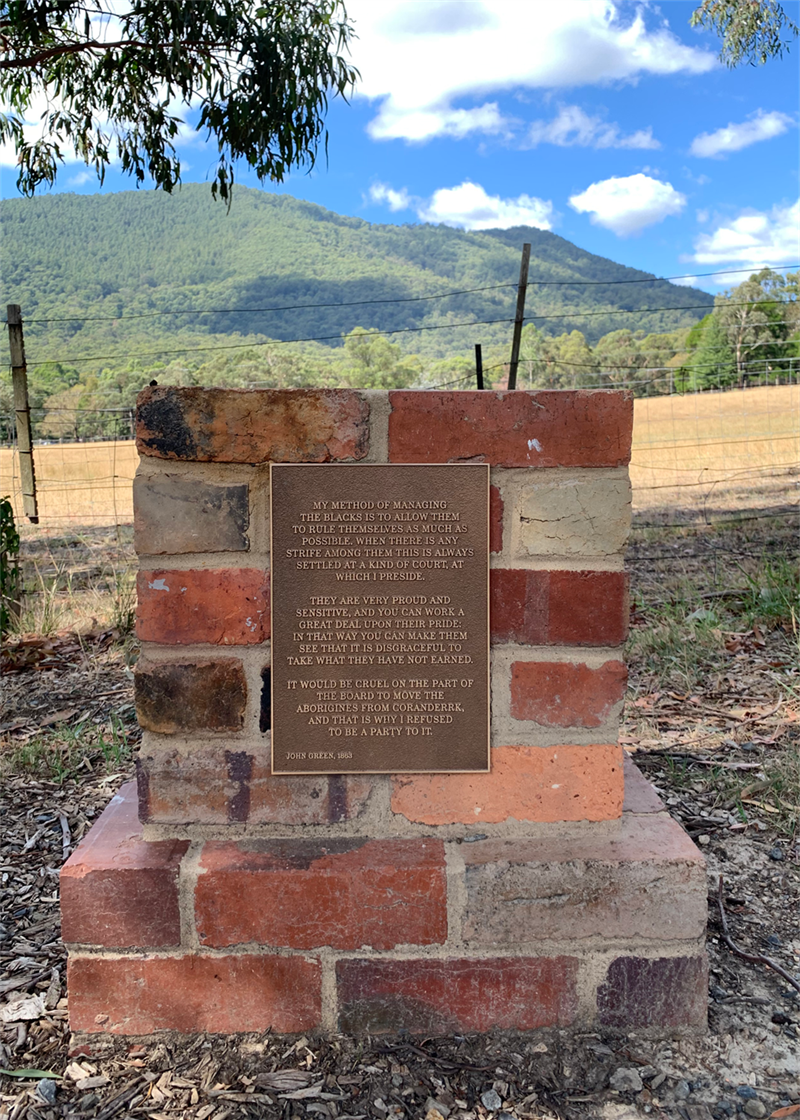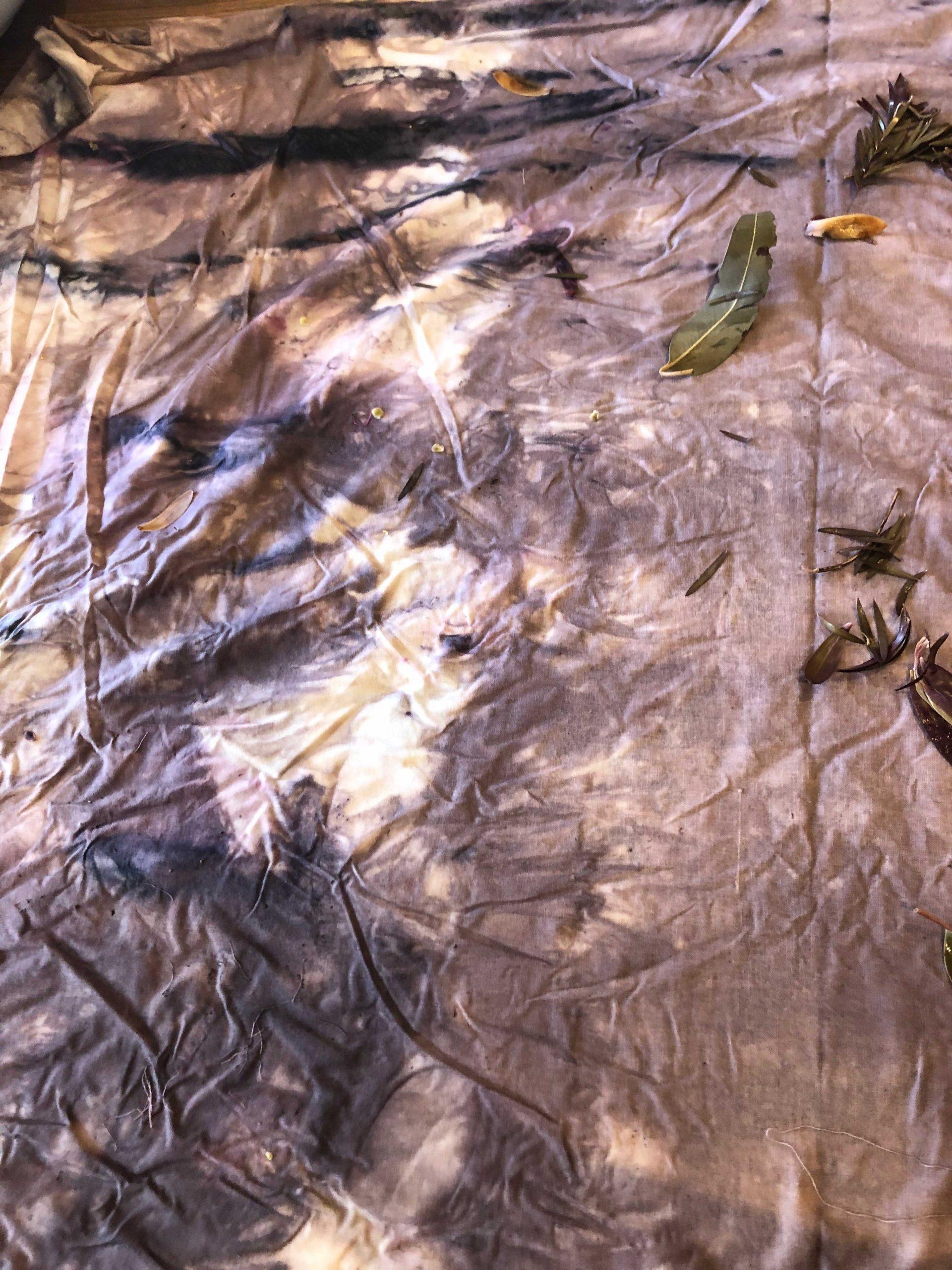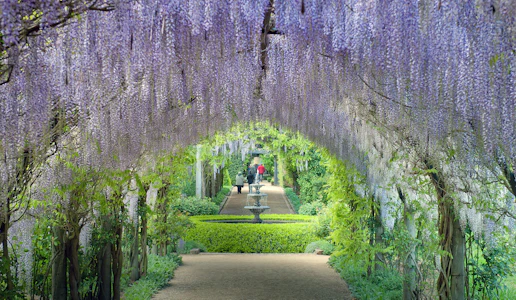
How to have an Indigenous experience in the Yarra Valley and Dandenong Ranges
For at least 35,000 years, the Wurundjeri people have been the traditional custodians of the land within Yarra Ranges and beyond.
Evidence of their rich cultural heritage and deep spiritual connection to this country can be found throughout the region.
Our Indigenous history is centred around Coranderrk Aboriginal Station which is located on the Yarra Flats, bordered by the Yarra River, Badger Creek, Watts River and the slopes of Mount Riddle. Established for the Wurundjeri people, it was also home to other people from the Kulin Nation, an alliance formed by five language groups – Woi Wurrung (Wurundjeri), Boon Wurrung, Wadawurrung, Dja Dja Wurrung (Jaara) and Taungurung.
Interested in learning more about the Indigenous history of the region? Here are a few ways you can do just that:

Move around Untitled, seven monuments, Healesville
Untitled, seven monuments is a public art project that marks the historical boundary of Coranderrk
Aboriginal Station, one of Australia’s most significant sites.
Established by Wurundjeri and other displaced Aboriginal people in 1863, Coranderrk became a thriving economic community and a powerful base for Aboriginal self-organisation and political advocacy. The community was constantly pitted against the forces of colonisation and other settler-imposed systems and by 1924 only a small handful of determined Elders remained on the much-reduced parcel of land.
Today, Coranderrk continues to be an important living place for Wurundjeri people, and for the wider Aboriginal community.
These seven sites together mark the boundaries of Coranderrk in 1866, when it was at its largest, comprising 4,850 acres. Each marker comprises an upturned flagpole and brick footing, with a plaque on each face, surrounded by Coranderrk (Christmas bush).
The public are invited to move between these
markers to learn about Coranderrk’s extraordinary history and traverse
Wurundjeri country.
Only six of the sites are accessible and many sites are located within what is now known as Healesville, others are outside of town.
Three of the markers can be found within an hour and to see all six, it'll take most of the day.
Find out more about the seven markers by clicking here.
Visit the Aboriginal Resource Centre
at Worawa College, Healesville
Worawara Aboriginal College provides a secondary boarding school experience for young Aboriginal women from communities in urban, regional and remote Australia. Based in Healesville, the school often hosts events allowing the public to learn through cultural experiences hosted at the centre. This can include visiting the Sandra Bardas Gallery which often hosts exhibitions showcasing authentic and affordable Indigenous art and crafts made by students of Worowa College and the communities they call Country.
The Worawa Professional Learning Institute (WPLI) also shares Aboriginal cultural experiences, protocols, history and more with schools, teachers, educators and government bodies as well as any individual with an interest in learning more about this rich culture and history, focussing on Victoria.
Meet Wurundjeri Elder Murrundindi at Healesville Sanctuary every Sunday
Murrundindi shares the cultural stories of this land each week at Healesville Sanctuary.
Learn a little language as he welcomes you onto Country with a friendly Womenjika; listen to the sounds of the didgeridoo; stop to have a yarn; hear local stories, and be amazed at his mastery making that Boomerang really fly!
While you're there, take the time to learn more about our native wildlife.
Read Balik Bagurrk - available from the Yarra Ranges Regional Museum and Yarra Ranges Council offices, Lilydale
Balit Bagurrk means strong woman in Woiwurrung, the local language of the Traditional Owners of the Yarra Ranges region, the Wurundjeri people.
This community-led project is designed to collect, remember and celebrate the stories of Aboriginal and Torres Strait Islander women who have contributed to the Yarra Ranges. It captures some of the stories of all the strong Aboriginal and Torres Strait Islander women who have resided in the area and have been an integral part of the history of the region.
Many of the women included in this project are descendants of Coranderrk residents, an Aboriginal reserve that functioned under the control of the Aboriginal Protection Board from the 1860s to the early twentieth century.
Balit Bagurrk is a project that gathered stories, photos, writing, poetry and artwork about the Aboriginal and Torres Strait Islander women who have been important to this region. These stories will be published in a book and digitally. More information can be found here.

Explore the Indigenous art collection and Curated Exhibitions TarraWarra Museum of Art, Healesville
TarraWarra is situated on Wurundjeri land and through their visiting and permanent curated exhibitions seeks to develop strong ties with First Peoples and present artworks that build connections and explore the heritage and cultural significance of the region. A visit to the museum is a must-do when exploring the Yarra Valley.
Previous exhibitions have featured works of contemporary Aboriginal artists from artists such as Paola Balla's Collecting Plants With Mum 2020 (pictured above, digital image courtesy of the artist. (Wemba Wemba,
Gundjitmara), Deanne Gilson (Wadawurrung), Kent Morris (Barkindji),
Glenda Nicholls (Waddi Waddi, Ngarrindjeri and Yorta Yorta), Steven
Rhall (Taungurung), Nannette Shaw (Tyereelore, Trawoolway, Bunurong),
Kim Wandin (Wurundjeri), Arika Waulu (Gunditjmara, Djapwurrung, Gunnai),
Rhiannon Williams (Wakaman, Waradjuri), and the Djirri Djirri Women’s
Dance Group (Wurundjeri, Dja Dja Wurrung, Ngurai Illum-Wurrung).
Explore Indigenous HIstory at Yarra Ranges Regional Museum, Lilydale
Connections: Stories, People Place is a permanent exhibition at the Yarra Ranges Regional Museum that traces more than 40,000 years of history through a diverse display of items that talk to the landscape, the industries, and the people who have made it their home. Learn about the Coranderrk Aboriginal Station and individuals including William Barak and the unsung heroes of everyday life in this region.
Marvel at the ‘Bukker Tillibul’ sculpture in Lilydale (Cave Hill)
‘Bukker Tillibul’ is the traditional Wurundjeri name for Cave Hill and site of the quarry where these stones were sourced. The sculpture was named by Joy Murphy, a Wurundjeri Elder. The presence of crows (a Wurundjeri totem) inspired the three tall structures and Bunjil, the wedge-tailed eagle (also a Wurundjeri totem) is associated with Cave Hill which legend says has a star that Bunjil threw many years ago lodged deep within.
Make A Future Date to Immerse Yourself in William Ricketts Sanctuary,
Mt Dandenong
William Ricketts was a quiet gentleman who had spent much time living with aboriginal communities in central Australia. He created the sanctuary as a place for quiet reflection and replenishing the spirit. He believed that all Australians should adopt Aboriginal philosophies, respecting the spirituality of mother earth and all things in the natural world. There are over 90 different sculptures carved into rocks and tree trunks that dot the paths that flow throughout the property.
Sadly, in June 2021, William Ricketts Sanctuary was extensively damaged, with many sculptures, buildings, pathways and handrails destroyed by an extreme weather event and numerous large fallen trees. Currently, this site is not available for public access.
Parks Victoria has undertaken storm recovery works in the area in an effort to re-open the cultural and historic site. At this stage, there is no specific date when the Sanctuary will re-open, but it is not expected to be before 2024. Please follow Parks Victoria for up-to-date information.








































